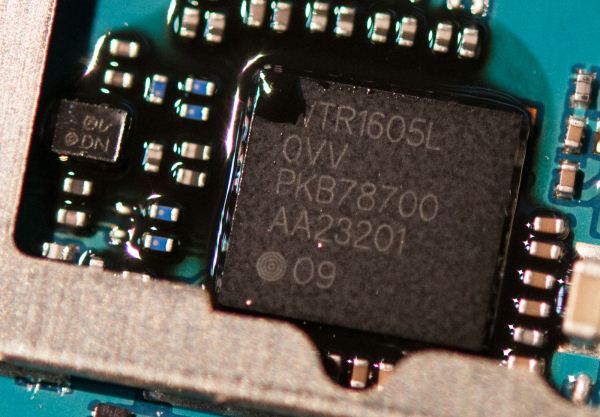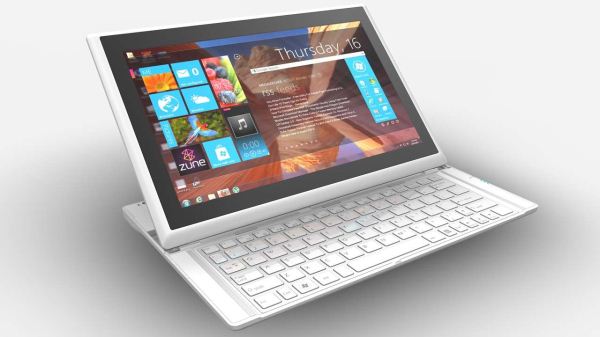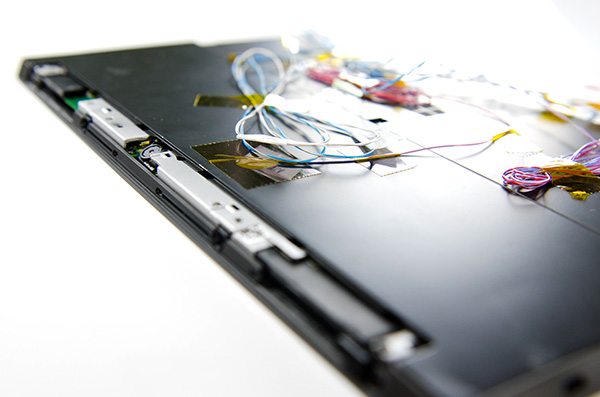AnandTech Article Channel |
- The State of Qualcomm's Modems - WTR1605 and MDM9x25
- MSI Announces Slider S20 Ultrabook Convertible
- Thoughts on Windows 8 Laptops with Touchscreens
- The ARM vs x86 Wars Have Begun: In-Depth Power Analysis of Atom, Krait & Cortex A15
| The State of Qualcomm's Modems - WTR1605 and MDM9x25 Posted: 04 Jan 2013 05:48 PM PST A little over a month ago, Qualcomm flew me out to San Diego to talk all about cellular modem, specifically their baseband lineup, testing, and later their RF and transceiver in what would become their largest RF disclosure ever. In the past few years, we’ve made considerable headway getting SoC vendors to disclose details on the CPU and GPU side of their products, and mobile enthusiasts now are starting to become increasingly cognizant of the SoC inside devices, and in turn the blocks inside that SoC. In a short term the industry as a whole went from smartphones largely being impenetrable black boxes to devices with understandable platforms inside. The days of an OEM not disclosing what SoC was inside a device at all are largely behind us, and for the most part vendors are open to discussing what’s really inside most of their silicon quite publicly. The last real remaining black box from my point of view is the cellular connectivity side of things. So much of what drives smartphone design and OEM choice lately is, unsurprisingly, how the device gets connected to the cellular network, and baseband remains largely a black box by design for a number of reasons. The focus of this article is specifically about Qualcomm’s newest transceiver, WTR1605L, and some more details about MDM9x25 and MDM9x15. |
| MSI Announces Slider S20 Ultrabook Convertible Posted: 04 Jan 2013 08:58 AM PST Next week kicks off CES 2013 in Las Vegas, and I along with many of the other AnandTech editors will be present. Prior to the actual start of the show, however, we see a ton of new product announcements. One of the more interesting laptops coming to the show is MSI’s new Slider S20 Ultrabook. I recently gave a quick rundown of the various tablet/hybrid options for Windows 8 laptops, so the S20 now joins the list. We’ve seen sliders before—mostly in the Android tablet space, but more recently in the Sony VAIO Duo 11. MSI’s S20 doesn’t appear to add anything radically different from others, but the specifications look good: you get a 1080p touchscreen with 10-point tracking (hopefully IPS, but that’s not specifically stated in the press release), 8GB DDR3 memory (huzzah! Take that all you 4GB non-upgradeable Ultrabooks!), 128GB SSD, and a Core i5 CPU. Other features include two USB 3.0 ports, Ethernet, 802.11n and Bluetooth (Intel 6235), mini-HDMI, and a 720p webcam. The S20 weighs in at 2.2 pounds (1kg) and carries an MSRP of $1200, with expected availability in Q1 2013. |
| Thoughts on Windows 8 Laptops with Touchscreens Posted: 04 Jan 2013 08:30 AM PST The past couple of months have been interesting, what with the launch of Windows 8 and the ushering in of a new user interface. I’ve had a couple of touchscreen Ultrabooks in for testing, and the experience can be quite different depending on how the laptop is designed. I discussed this in our Ultrabook/Ultraportable Holiday Guide, and the first complete review (Acer’s S7) will be up shortly, but one thing that stands out as an immediate point of differentiation is how the touchscreen aspect is presented to the user. At present, I’m aware of
So there you have it: the various options for adding a touchscreen to a Windows 8 laptop/convertible. Personally I think my ideal is number two, the detachable screen. ASUS’ Transformer tablets basically started this approach, but while they were fine as Android tablets I’ve still felt performance and usability were lacking in the docked “laptop” mode. With Windows 8, we can now get a full Windows 8 experience with all of the usual apps and applications (the latter being a term I use for traditional “desktop” programs). I’m not convinced Clover Trail has the performance to keep me happy with such a design, but give me a Core i5 Ivy Bridge or Haswell processor with a detachable screen and I’d give it serious thought—especially if it’s a 1080p IPS display. I’m curious to hear what you think are the best choices and why. What tablet/hybrid is your favorite right now, which if any of the above have you personally used, and are there problems and/or successes with any particular approach that I neglected to cover? What would you like to see more of, particularly in terms of coverage of these new devices? Let us know in the comments!
|
| The ARM vs x86 Wars Have Begun: In-Depth Power Analysis of Atom, Krait & Cortex A15 Posted: 04 Jan 2013 03:32 AM PST Late last month, Intel dropped by my office with a power engineer for a rare demonstration of its competitive position versus NVIDIA's Tegra 3 when it came to power consumption. Like most companies in the mobile space, Intel doesn't just rely on device level power testing to determine battery life. In order to ensure that its CPU, GPU, memory controller and even NAND are all as power efficient as possible, most companies will measure power consumption directly on a tablet or smartphone motherboard. The process would be a piece of cake if you had measurement points already prepared on the board, but in most cases Intel (and its competitors) are taking apart a retail device and hunting for a way to measure CPU or GPU power. I described how it's done in the original article. The previous article focused on an admittedly not too interesting comparison: Intel's Atom Z2760 (Clover Trail) versus NVIDIA's Tegra 3. After much pleading, Intel returned with two more tablets: a Dell XPS 10 using Qualcomm's APQ8060A SoC (dual-core 28nm Krait) and a Nexus 10 using Samsung's Exynos 5 Dual (dual-core 32nm Cortex A15). What was a walk in the park for Atom all of the sudden became much more challenging. Both of these SoCs are built on very modern, low power manufacturing processes and Intel no longer has a performance advantage compared to the Exynos 5. Read on for our analysis. |
| You are subscribed to email updates from AnandTech To stop receiving these emails, you may unsubscribe now. | Email delivery powered by Google |
| Google Inc., 20 West Kinzie, Chicago IL USA 60610 | |












No comments:
Post a Comment